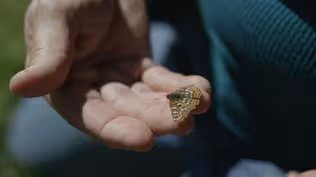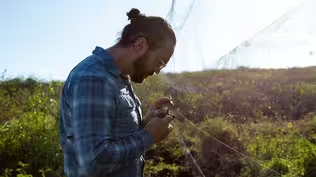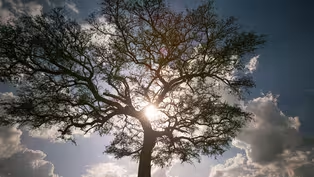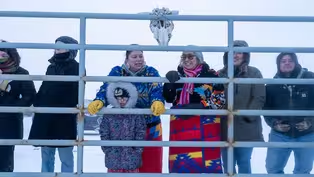
A Growing Number of Wildebeest In the Serengeti
Clip: Episode 5 | 3m 16sVideo has Closed Captions
Wildebeest numbers rose after eradicating rinderpest. The Serengeti ecosystem rebounded.
After vets eradicated rinderpest, a disease which impacts both cattle and the wildebeest of the Serengeti. Wildebeest numbers grew and grew from 300,00 to over a million. At the time experts were worried they would overgraze destroying the ecosystem but instead the opposite happened, a key relationship was restored and the whole environment started to flourish.
Problems playing video? | Closed Captioning Feedback
Problems playing video? | Closed Captioning Feedback

A Growing Number of Wildebeest In the Serengeti
Clip: Episode 5 | 3m 16sVideo has Closed Captions
After vets eradicated rinderpest, a disease which impacts both cattle and the wildebeest of the Serengeti. Wildebeest numbers grew and grew from 300,00 to over a million. At the time experts were worried they would overgraze destroying the ecosystem but instead the opposite happened, a key relationship was restored and the whole environment started to flourish.
Problems playing video? | Closed Captioning Feedback
How to Watch Evolution Earth
Evolution Earth is available to stream on pbs.org and the free PBS App, available on iPhone, Apple TV, Android TV, Android smartphones, Amazon Fire TV, Amazon Fire Tablet, Roku, Samsung Smart TV, and Vizio.
Buy Now

Evolution Earth
Traveling to the far corners of the world, we discover the extraordinary ways animals are adapting to our rapidly changing planet. We witness nature’s remarkable resilience, as our perception of evolution and its potential is forever transformed. Read these interviews with experts to learn more.Providing Support for PBS.org
Learn Moreabout PBS online sponsorship[Shane] Scientists observing the wildebeest watched as the population exploded.
♪ ♪ They rose and rose from 300,000 animals to over a million in less than 20 years.
♪ No one saw it coming.
At the time, people got so worried, there were even calls to cull the wildebeest.
They thought these giant herds would turn the Serengeti to dust... ♪ [thunder rumbling] and the land did change.
♪ It became greener.
[lowing] Where the wildebeest grazed, trees grew where they hadn't grown before.
The Serengeti supported more animals, not less.
The herds of wildebeest moved across the landscape, transforming the ecosystem.
It was extraordinary!
♪ Yeah.
The story is a bit more complicated.
Maybe I can say something about the dung, as well?
Yeah.
[Shane] I think it's best to hand it over to Inger de Jonge.
She's a grassland ecologist and she knows her... uh, stuff.
[Inger] A lot of wildebeest also means a lot of dung, and a lot of dung means a lot of dung beetles... and dung beetles make these nice round balls, and they actually incorporate that inside soils.
[Shane] We need to take a moment here to really appreciate just what these little guys can do.
He pushes up to 50 times his own body weight.
He will roll his stash for over 600 feet, looking for just the right soft soil to store his treasure.
For us, that's like pushing a compact car for nearly 9 miles.
Why does he do it?
The dung balls are going to be food and a nursery for the females' larvae... and it turns out this paternal moment has a much more important effect on the plains than we first thought.
Incredibly, nearly 20% of all the soil in the Serengeti is buried dung balls.
That's a lot of poop.
Video has Closed Captions
Preview: Ep5 | 30s | Forgotten and overlooked, grasslands could hold the key to our planet’s survival. (30s)
A Herd of Buffalo Are Returned to the Fort Peck Reservation
Video has Closed Captions
Clip: Ep5 | 5m 45s | A momentous occasion as a new Buffalo herd are returned to the Fort Peck Reservation. (5m 45s)
Scientists Look to Soil for Answers on Climate Change
Video has Closed Captions
Clip: Ep5 | 3m 7s | Plants are reacting to our changing climate so scientists are looking to soil for answers. (3m 7s)
Providing Support for PBS.org
Learn Moreabout PBS online sponsorship
- Science and Nature

Explore scientific discoveries on television's most acclaimed science documentary series.

- Science and Nature

Capturing the splendor of the natural world, from the African plains to the Antarctic ice.












Support for PBS provided by:





